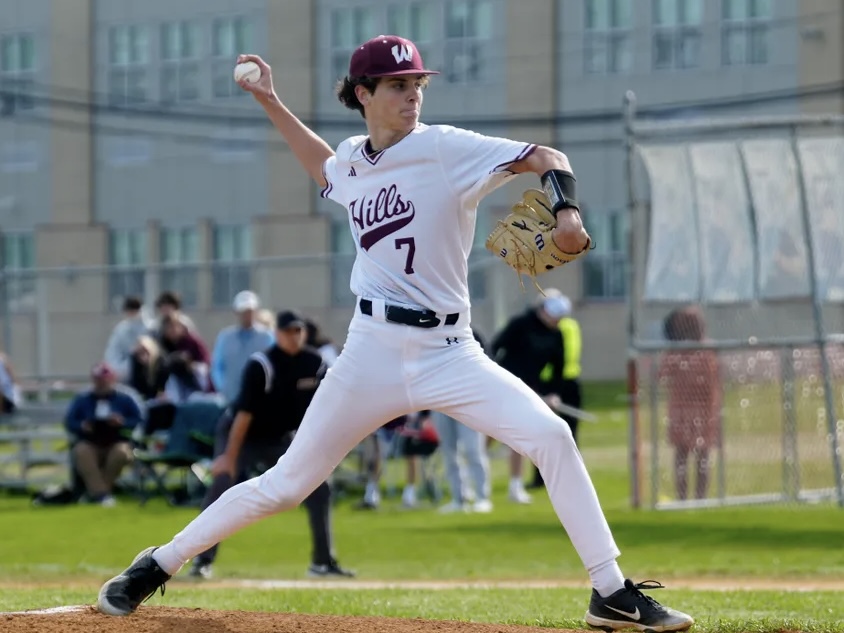
Wayne Hills RHP Chris Cundari (Class 2026) joined us during the fall of last year in the Pitching Lab for off-season training. In general, Chris was looking to improve his velocity as well as get healthy. We got right into attacking his off-season training by finding out what Chris’ most readily achievable goals were. After 4 months of hard work, Chris is healthy again with a refined pitch arsenal and an increase in velo from T87 to T90.
How did he do it?
RPP’s off-season high school program begins in November and ends in early March. Chris started the off-season with a comprehensive physical and mechanical evaluation:
-
- Physical Assessment – Covers a number of important topics, including (a) lower and upper half mobility – (b) lower and upper half strength, (c) lower and upper half power, (d) speed – 30-yard dash, (e) elasticity – lower and upper half, (f) decel metrics, (g) body fat % and lean mass ratios and a (h) force-velocity evaluation profile.
- Mechanical Assessment – Represents a complete analysis and report of the athlete’s delivery and broken down into three specific areas kinematically. These include (a) arm and shoulder, (b) trunk movement and (c) lower half.
- Pitch Arsenal – Represents a thorough analysis of the pitcher’s arsenal, pitch-movement profile for potential improvements in movement and/or an expansion of the overall repertoire.
By the time an athlete has completed our evaluation, we have an excellent idea of what his strengths are and which weaknesses we should pursue to optimize performance. There is NO better blueprint.
Physical Assessment
Body Composition
Below is a summary of Chris’ height, weight, and body fat % in the beginning of the program. Needless to say, he started the program in good physical shape but definitely was looking to add 10-15 lbs. of lean muscle.
-
- Height – 72”
- Weight – 163 lbs.
- Ratio – 2.26x (desired rage of 2.5 – 3.0)
- Body Fat – 12%
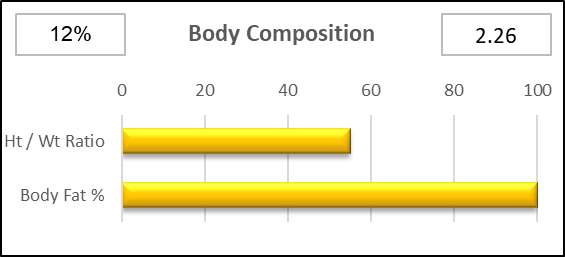
Upper and Lower Half Mobility
The movement screening portion of the assessment is essential in identifying mobility and / or stability issues that may hinder the athlete’s ability to get into optimal positions throughout the delivery. In most cases, the issues that are presented in this portion of the assessment will be visible when we are evaluating the athlete’s mechanics in the latter part of the assessment.
Chris needed to focus on improving his Shoulder ROM, both ER and IR. Not having adequate mobility in the shoulder can force the elbow and other areas of the arm to absorb the force of the throw.

Upper and Lower Body Strength
Strength and power testing gives us more information about the type of athlete we are dealing with and higher gains in these two categories help create not only a higher velocity ceiling, but an overall more athletic body.
The following is the summary of Chris’ 1RM metrics in the weight room. As you can see, Chris was close to hitting his goals for his size but was not considered strong enough in his upper half and posterior chain.
-
- Trap Bar Deadlift – 306 lbs.
- Single Leg Squat – 90 lbs.
- Bench Press – 170 lbs.
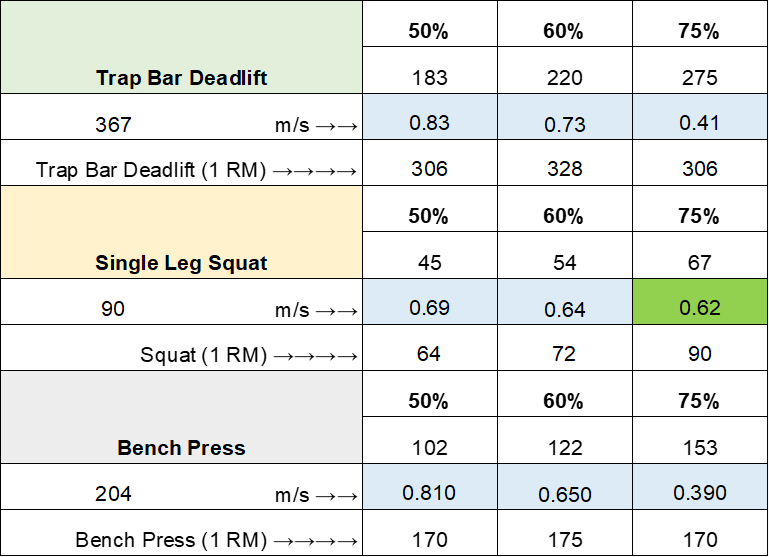
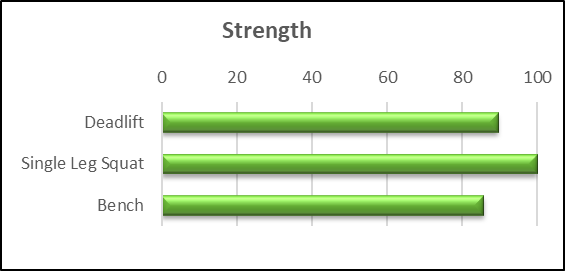
Lower and Upper Half Power
Power = Force X Velocity
Power is all about how quickly we can produce Force (strength). In baseball, you need to be both strong and powerful in the lower and upper halves.
Lower Half – With respect to power, the first test we complete is a Counter Movement Jump (CMJ). This jump is performed to test the athlete’s ability to utilize their Stretch Shortening Cycle and relates to the velocity portion of the power equation and ultimately gives us the athletes Force-Velocity profile.
The second test, Squat Jump, is performed to test the athlete’s ability to use muscular force and relates to the force side of the power equation and Force-Velocity Curve.
Chris’ lower half power testing was exceptional. He is a very springy and quick twitch athlete which is one of his strong suits that we see here in his lower half testing.

Upper Half – We test upper half rotational power on a Proteus Motion machine, utilizing two different tests:
-
-
- Trunk Rotation – Similar to the squat jump this involves no “pre-stretch”
- Plyo Trunk Rotation – Same movement with a “pre-stretch”
-
The same could be said for Chris’ upper half, as his ability to produce force at a quick rate helps him produce good power numbers. As stated prior though, there is still some low hanging fruit here. If Chris can continue to add weight and get stronger, we will see his force number progress as well as his power numbers.
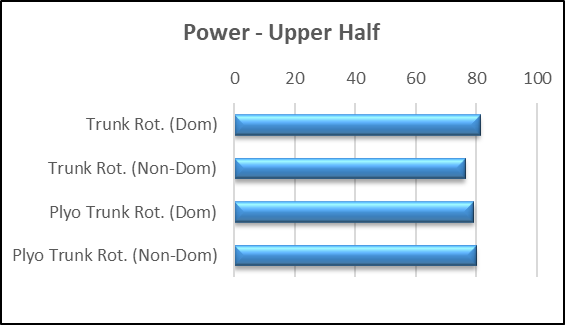
Deceleration
This test looks at the ability of the athlete’s lead leg to hit the brakes immediately at foot plant and in turn transfer force back up the kinetic chain to use during the throw. Jump height and contact time give us what is known as a “Reactive Strength Index” (RSI) which helps us prescribe the correct level of plyometrics.
Chris’s decel is satisfactory with room for improvement. We typically would like guys to reach the 80-grade percentile to be deemed “good enough” in that area. Chris was lacking here only because of how much force he could produce on the test. His elite contact time allows for a good RSI score, but with increase in strength, weight, and force, that RSI will go up, so we put an emphasis on single leg plyometrics.

Pitching Mechanics
The pitching mechanics analysis involves analysis of all possible disconnects in the delivery which are then summarized into a summary report. Each athlete is given an overall summary.
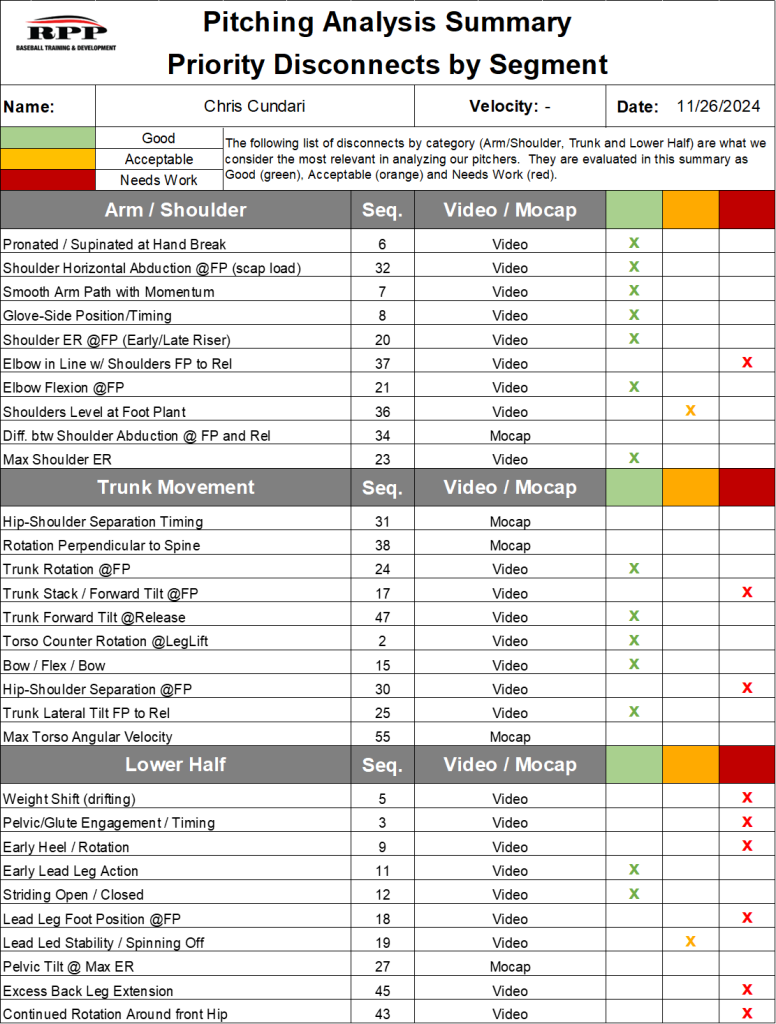
As pitching mechanics go, the vast majority of Chris’ disconnects were caused by his lower half. Below is a summary and description of each:
Arm / Shoulder
-
- Shoulders Level at Foot Plant – Front Shoulder should be level with back shoulder at foot plant. Anything less can negatively affect creating later arm speed and staying on the ball longer to create better leverage and later arm speed
- Elbow in Line w/ Shoulders Foot Plant to Release – Elbow being in line with shoulder from foot plant through ball release. It is important to maintain a good plane of rotation in order to produce the most rotational acceleration as well as keeping the arm in a healthy position to spiral out properly. In Chris’ case, this issue was causing him to hike his elbow, and in conjunction with his poor Shoulder ROM, causing some inflammation in his elbow.
Trunk Movement
-
- Trunk Stack/Forward Tilt at Foot Plant – This is the ability to keep the pelvis and upper body stacked from the beginning of the linear move all the way into FP. Failure to do so will make it difficult to achieve efficient rotation and forward trunk flexion to occur later in the delivery
- Hip Shoulder Separation – Ability to rotate the hips into landing while keeping torso closed and this ideally occurs at or slightly after foot plant. This is a key factor in helping to create torque as well as a harder throw with less effort
Lower Half
-
- Pelvic/Glute Engagement – This is defined by proper weight distribution on the back leg/foot and slightly hinging at the hips. This is key for maintaining posture into FP and avoiding a “push” or “Vaulting” off the rubber. In Chris’ case, his inability to effectively load his back leg caused him to get jumpy and extend out of his back leg early instead of rotating out of it properly, leading to a decrease in force production and more stress on the upper half to complete the throw
- Continued Rotation Around the Front Hip – Also known as “Lead Leg Block”, this is the athlete’s ability to effectively rotate into their front hip and accept force with their lower half instead of “slamming” the posterior shoulder after ball release. If the body stops rotating, the arm will keep going, creating rapid elbow extension and putting stress on the medial and posterior elbow.
Mechanical disconnects are often addressed by work both in the weight room and specific drill sets we assign the athlete to be performed on a daily basis. In addition to Chris’s mobility correctives, the following throwing drills were assigned:
-
- Half Kneeling Throws – Used to help tap into rotation during delivery by eliminating the lower half from the throw and focus on hip-shoulder separation. Also working on keeping the front foot closed.
-
- Post-up Drill – Used to help train deceleration of the front leg at foot strike. Focusing on rotating the pelvis over a strong stable front leg while maintaining a loose arm
-
- Reverse Walking Windup – Used to simulate the throwing motion while tapping into rotation and shifting COM backwards. Focusing on feeling backside connected to the ground on walk backwards
-
- Rhythmic Breaks – Focuses on staying connected during the throw and the linear move. Helps drill the pattern of positions wanted to be achieved during the throw prior to making the throw. Improves glove-side position/timing, back foot connection, and a fluid arm path.
Pitching Arsenal
Chris came in with a 4SFB, CH, and CB. Chris’s CH was by far his best pitch, he just needed to work on his execution and mindset when throwing. He had the tendency to let up instead of staying violent, causing him to yank it glove side. After working on feels off the hand and mindset when throwing it, he improved his execution drastically.
We then began working on Chris’ supinated pitches. We first adjusted his CB to make the shape bigger and sharper. We added a spike to his grip and switched the seam orientation to allow for it to come out of his hand harder and sharper, with a bigger movement profile. After we locked this down, we began to work on a Cutter to help bridge the gap between his 4SFB and new CB. We ideally wanted this pitch to be in the low 80s with a movement profile around 5-7” of IVB and hovering around the Zero line for HB.
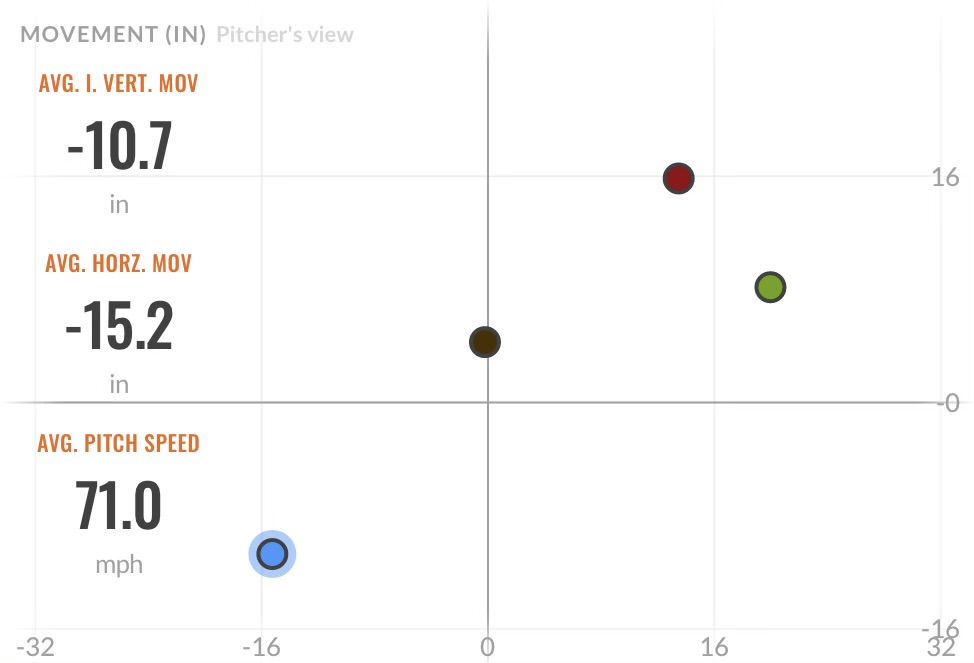
Now Chris has a 4-pitch arsenal that all blends well with each other to give himself the best chance to succeed.
Summary Results and Spring Season
The good news is that over the course of the off-season, Chris added the 15 lbs. we were looking for to his frame. While adding to his lean muscle mass, Chris also managed to increase his weight room and force plate metrics:
-
- Deadlift – 306 lbs. >> 410 lbs.
- Single Leg Squat – 90 lbs. >> 95 lbs.
- Bench Press – 170 lbs. >> 195 lbs.
- CMJ Power – 4,113 Watts >> 4,713 Watts
- Squat Power – 4,464 Watts >> 5,025 Watts
- RSI – 0.72 m/s >> 0.82 m/s
So far this spring, Chris has seen his hard work pay off. He has had 4 starts with a 1.85 ERA across 22.2 IP with 8 H, 7 BBs, and 33 K’s. Chris’ season is highlighted by a no hitter on April 9th, where he threw a CG No-Hitter with 7 K’s. He has seen his K/9 go from 8.8 last year to 13.4 this year as well as his BB/9 go from 4.5 last year to 2.8 this year.
Chris crushed it this offseason and we look forward to seeing what the rest of the spring and summer have to hold for the 2026 prospect.
Keep up the great work Chris!
Article by Matt Hartshorn and Nunzio Signore
